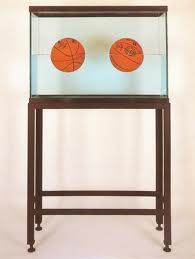Art, The Commodity

An extraordinary thing happened in the 1980s. It seemed to come out of the blue. The East Village gave birth to a rash of galleries in every imaginable nook and cranny…storefronts, apartments, even abandoned buildings. That period in the annals of art history is explored in a new exhibition “Circa 1986” at the Hudson Valley Center for Contemporary Art (HVCCA). The show’s viewpoint is that of six collectors, all actively pursuing artwork during that period of time…artwork that might, or perhaps not, become the next mega art neo-movement.
The exhibition is interesting from several perspectives, not the least of which has to do with the aftermath of the exhilarating hype of the 80s in which any price was not too much for the work of new and emerging artists. That notion by the 90s had faded. However, much of the work of this period has maintained its value, not just in terms of the art market, but in terms of its artistic importance. As in every period of time, some work is validated, others forgotten. What is most interesting in this exhibition is the focus on the role of the collector as an “arts player” and how his/her taste can be viewed as a trendsetter or “influencer” of the market.
I was transfixed seeing the brilliant work from private collections that came out of this period. As a “used to be” artist who schlepped canvasses around to galleries and who held her breath at the prospect of a studio visit, it felt good to know that there was this tremendous opportunity available to artists. The creation of so many galleries multiplied the chances for an artist’s work to be seen, democratizing in a sense, the process. The explosion of galleries made Saturday afternoons in the East Village an adventure, bringing new collectors into the marketplace. It all had the air of a tremendous art fair in which anything was possible and everything was art. And then it fizzled. By the 90s, those galleries that could afford it moved to Soho, where larger spaces were better venues for showing art. Others folded. Says Marc Straus, who with his wife Livia founded the HVACC, “It really was an extraordinary decade. The art world changed in front of us,” says Straus. “It was sleepy until 1981, exploded for a decade, and collapsed by 1990, along with the real estate market.” The excitement of the period was best summed up by Livia Straus, HVACC Executive Director, in the handsome catalog for the show: “We would go down to the East Village to visit streets, ‘down and dirty’ dingy storefronts, broken-down stores, and would pass a doorway and there would be a gallery – many put together by artists – with paintings and sculptures piled high, many salon style… It was a time of discovery and artistic invention and reinvention. We loved it; loved seeing the art, meeting the artists. The art scene was young and adventurous and that scene was here in New York and in America.” Marc and Livia have brought a part of that excitement to Peekskill, Westchester, New York, America.


Connect with Janet